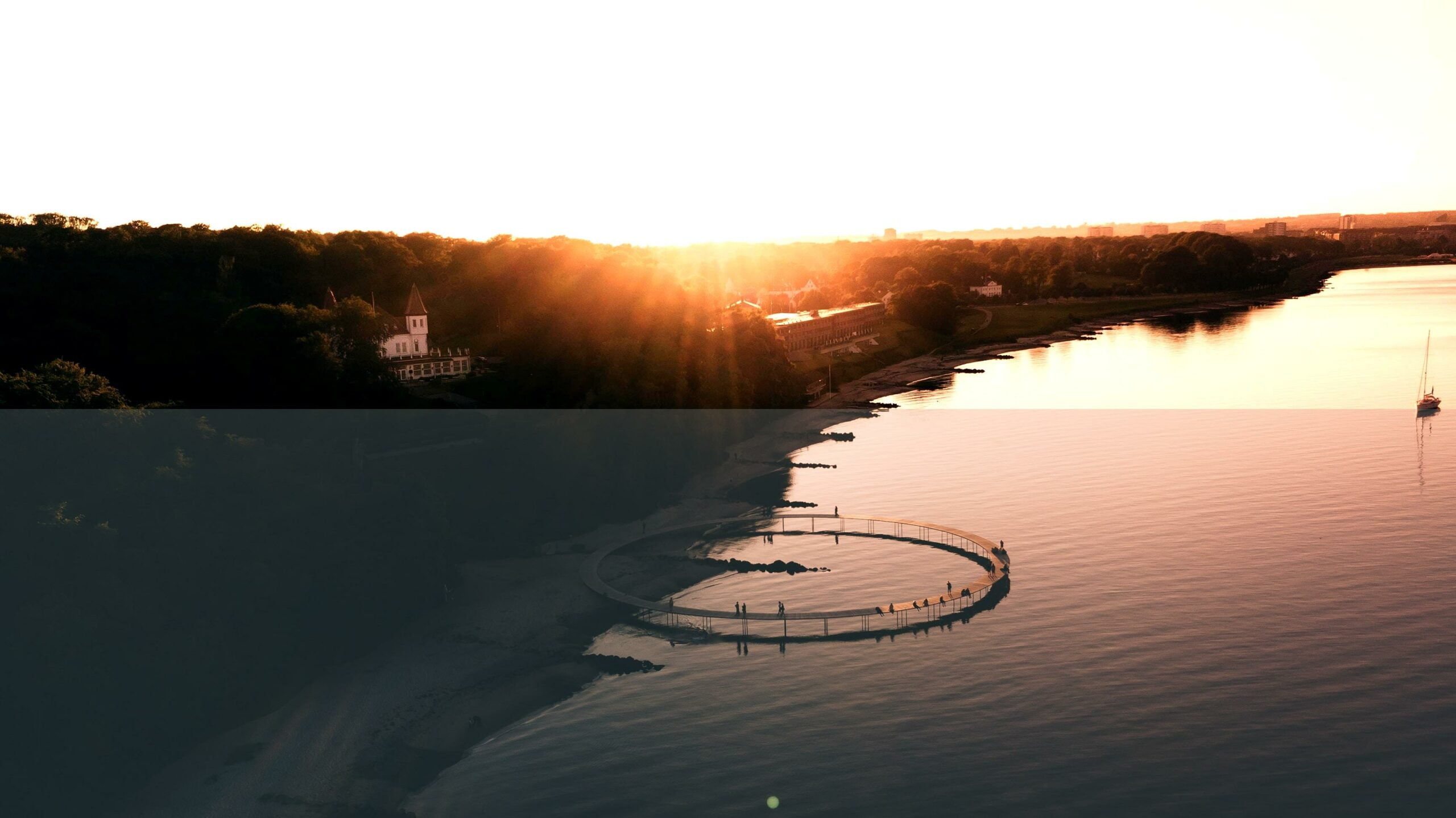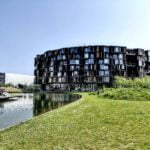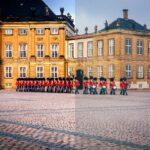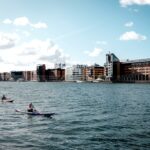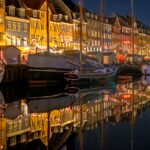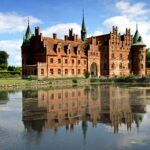Are you ready to embark on a journey through the enchanting world of Danish culture? Brace yourself for a kaleidoscope of wonders as we dive into the heart of Denmark, unearthing 100 surprising cultural facts that will leave you marveling at the rich heritage of this Scandinavian gem. From ancient Viking legends to modern-day innovations, join me as we unravel the tapestry of Danish traditions, history, and landmarks. Prepare to be captivated as we delve into the depths of Danish charm and discover what makes this country truly extraordinary.
100 Facts About Denmark
Denmark, with its rich history, cultural heritage, and stunning landscapes, is a country that never fails to captivate travelers. Whether you’re a history enthusiast, nature lover, or simply seeking unique experiences, Denmark offers a wealth of surprises. In this article, we’ll delve into 100 captivating facts about Denmark that showcase the vibrant essence of Danish culture and heritage.
1. Danish Monarchy: Denmark boasts the oldest continuing monarchy in the world, with a history spanning over 1,000 years. The Danish royal family is deeply rooted in Danish society and remains beloved by the Danish people.
2. Viking Heritage: Denmark’s past is intertwined with the era of Vikings. Proud seafarers and warriors, the Vikings left their mark on Danish history and continue to fascinate people worldwide.
3. Hans Christian Andersen: Denmark is the birthplace of the renowned fairy tale author, Hans Christian Andersen. His timeless stories like “The Little Mermaid” and “The Ugly Duckling” have captured the imagination of generations.
4. Danish Design: Denmark is known for its innovative and functional design. From the iconic chairs of the legendary designer Arne Jacobsen to the modern architectural marvels, Danish design continues to inspire and influence the global design community.
5. Hygge: The Danish concept of “hygge” (pronounced hoo-gah) embodies coziness, contentment, and a sense of well-being. It’s a way of life that embraces simplicity, warmth, and the enjoyment of life’s small pleasures.
6. Lego: Did you know that Lego, the world-famous building blocks, originated in Denmark? This beloved toy has captured the hearts of children and adults alike, sparking creativity and imagination worldwide.
7. Green Energy: Denmark is a leader in sustainable energy. The country aims to be carbon-neutral by 2050 and has invested heavily in wind power, making it a global model for renewable energy.
8. H.C. Ørsted: Danish scientist Hans Christian Ørsted discovered electromagnetism, laying the foundation for modern physics and electrical engineering. His groundbreaking work revolutionized the world.
9. Fairy-Tale Castles: Denmark is home to picturesque fairy-tale castles that seem straight out of a storybook. From Kronborg Castle, said to be the inspiration behind Shakespeare’s “Hamlet,” to Frederiksborg Castle, each has its own enchanting tale to tell.
10. Nordic Cuisine: Danish cuisine emphasizes fresh, locally sourced ingredients. From mouthwatering open-faced sandwiches known as “smørrebrød” to delicate pastries like “wienerbrød,” Danish gastronomy delights food enthusiasts from around the globe.
11. The Little Mermaid: The iconic statue of “The Little Mermaid” in Copenhagen is one of Denmark’s most famous landmarks. Inspired by Hans Christian Andersen’s fairy tale, it attracts visitors who want to catch a glimpse of this enchanting character.
12. Bicycle Culture: Denmark is renowned for its strong bicycle culture, with more bicycles than cars. With an extensive network of bike tracks spanning over 7,456 miles, cycling is not only a popular mode of transportation but also a way of life for many Danes.
13. Tivoli Gardens: Tivoli Gardens, one of the world’s oldest amusement parks, is located in the heart of Copenhagen. This enchanting oasis offers thrilling rides, beautiful gardens, and vibrant entertainment, providing a magical experience for visitors of all ages.
14. Danish Language: Danish, the official language of Denmark, is part of the North Germanic language family. It features a unique alphabet that includes three additional letters: æ, ø, and Å.
15. Scandinavian Design: Denmark is a cornerstone of Scandinavian design. Known for its minimalist aesthetic, functionalism, and focus on craftsmanship, Scandinavian design has gained global recognition for its timeless elegance.
16. Danish Flag: The Danish flag, known as the Dannebrog, is the oldest state flag still in use by an independent nation. Legend has it that it fell from the sky during a battle in the 13th century, serving as a symbol of divine intervention.
17. Danish Smørrebrød: Smørrebrød is a traditional Danish dish consisting of open-faced sandwiches. These delectable creations are topped with an array of ingredients, including pickled herring, cold cuts, seafood, and fresh vegetables, reflecting Danish culinary traditions.
18. Viking Ship Museum: The Viking Ship Museum in Roskilde is a must-visit for history enthusiasts. It houses five remarkably preserved Viking ships discovered in the nearby fjord, providing a unique glimpse into the seafaring heritage of the Vikings.
19. Danish Christmas: Christmas in Denmark is a truly magical experience. Danish traditions, such as the lighting of Advent candles, dancing around the Christmas tree, and enjoying special treats like æbleskiver (round pancakes), create a warm and festive atmosphere.
20. Modern Architecture: Denmark is a hub of modern architectural marvels. From the striking Black Diamond library to the futuristic Copenhagen Opera House, the country seamlessly combines contemporary design with historic charm.
21. Danish National Costume: The traditional Danish national costume, known as the “folkecostume,” is still worn on special occasions and holidays. Each region in Denmark has its own distinct costume, showcasing the diversity and richness of Danish cultural heritage.
“Denmark’s blend of history, design, and enchantment unfolds in its fairy-tale castles, Viking heritage, and cozy concept of hygge.”
22. Jazz Music: Jazz has a special place in Denmark’s cultural scene. The Copenhagen Jazz Festival, attracting both local and international artists, is a vibrant celebration of this genre, reflecting Denmark’s passion for music.
23. The Royal Guard: The Royal Guard, dressed in their distinctive red uniforms and bearskin hats, protect the Danish royal family. Witnessing the changing of the guard at Amalienborg Palace is a captivating tradition that attracts visitors year-round.
24. The Food Market Experience: Copenhagen’s Torvehallerne food market is heaven for food lovers. With an abundance of fresh produce, artisanal delights, and international flavors, it offers a culinary experience that tantalizes the taste buds.
25. Danish Butter Cookies: Danish butter cookies are renowned worldwide for their crisp texture and irresistible taste. These delicate treats, often packed in iconic round blue tins, make a perfect gift or souvenir embodying Danish culinary tradition.
“Immerse yourself in the magical world of Denmark’s Viking legacy, mouthwatering butter cookies, and lively jazz scene.”
26. Open-Air Museums: Denmark’s open-air museums, such as the National Open Air Museum in Aarhus, allow visitors to step back in time. These living history exhibits offer a glimpse into traditional Danish rural life, showcasing historic buildings and crafts.
27. Danish Modern Furniture: Danish modern furniture has left an indelible mark on the world of design. Renowned designers like Arne Jacobsen, Hans Wegner, and Børge Mogensen produced iconic pieces that continue to define the modernist aesthetic.
28. Danish Windmills: Windmills are an integral part of Denmark’s landscape, symbolizing the harmony between nature and technology. These picturesque structures represent the country’s commitment to renewable energy and sustainability.
29. Danish Fairy Tales: Beyond Hans Christian Andersen, Denmark has a rich tradition of folk tales and legends. These stories, filled with mystical creatures and exciting adventures, are deeply rooted in Danish culture and heritage.
30. Danish Smiles: Denmark consistently ranks among the happiest countries in the world. Known for their friendliness and warm smiles, the Danish people create an inviting and welcoming atmosphere for visitors.
31. Scandinavian Mythology: The ancient myths and legends of Scandinavian mythology, including Norse gods such as Odin and Thor, are an integral part of Danish culture. Exploring these tales offers an insight into the beliefs and values of the Danish people.
32. Danish Maritime Heritage: Denmark’s strong maritime heritage is intertwined with its history as a seafaring nation. From Viking longships to modern shipping, Denmark’s connection to the sea has shaped its culture, economy, and identity.
33. Danish Chocolates: Danish chocolates, such as those produced by renowned chocolatiers Anthon Berg and Peter Beier, are a treat for the taste buds. The artistry and quality of Danish chocolate make it a delight for chocolate connoisseurs.
34. Danish Royal Residences: The Danish royal family resides in various palaces and castles across the country, including Amalienborg Palace in Copenhagen, Marselisborg Palace in Aarhus, and Fredensborg Palace. These stunning residences reflect Danish architectural elegance and provide insight into royal life.
35. Danish Sculpture: Denmark is renowned for its exceptional sculpture tradition. From the iconic Little Mermaid statue to the works of renowned sculptor Bertel Thorvaldsen, Danish sculpture is celebrated for its beauty, craftsmanship, and cultural significance.
36. Skagen: The charming seaside town of Skagen, located on the northern tip of Denmark, has long been a haven for artists. Its unique light and stunning landscapes inspired the famous Skagen painters, creating a legacy in Danish art.
37. The Royal Danish Ballet: The Royal Danish Ballet, founded in the 18th century, is one of the oldest ballet companies in the world. Known for its technical excellence and interpretation of classical and contemporary works, it continues to mesmerize audiences.
38. Danish Film Industry: Denmark has made its mark on the international film scene with acclaimed filmmakers such as Lars von Trier, Susanne Bier, and Thomas Vinterberg. Danish cinema has gained recognition for its thought-provoking storytelling and artistic vision.
39. Danish Coastal Landscapes: Denmark’s coastline is a treasure trove of natural beauty. From towering cliffs to sandy beaches and picturesque fishing villages, exploring the Danish coast offers breathtaking vistas and a chance to connect with nature.
40. Danish Viking Museums: Denmark is home to several Viking museums that provide insight into this fascinating era. From the National Museum in Copenhagen to the Viking Ship Museum in Roskilde, these museums bring Viking history to life.
“Denmark’s captivating allure lies in its jazz-filled streets, traditional costumes, and mouthwatering Danish butter cookies.”
41. Danish Beer: Denmark has a thriving craft beer scene, with numerous breweries producing a wide variety of high-quality beers. From traditional lagers to innovative brews, Danish beer delights beer enthusiasts and showcases the country’s passion for craftsmanship.
42. Danish Horticulture: Denmark’s horticultural tradition is rooted in its beautiful gardens and parks. The Fredensborg Palace Gardens and the Tivoli Gardens are just a few examples of the stunning horticultural masterpieces that Denmark has to offer.
43. Viking Festivals: Experience the magnificence of Viking culture at the numerous Viking festivals held across Denmark. These vibrant celebrations feature reenactments, traditional crafts, Viking battles, and a chance to immerse yourself in the fascinating world of the Vikings.
44. Danish Festive Traditions: Danes celebrate a variety of festive traditions throughout the year. From the colorful and captivating Aarhus Festival to the joyous Christmas markets, these celebrations bring communities together and showcase Danish cultural heritage.
45. Danish Nature Reserves: Denmark takes great pride in preserving its natural beauty. The country boasts several stunning nature reserves, including the Wadden Sea National Park, offering a haven for wildlife and a chance to explore unspoiled landscapes.
46. Danish Education System: Denmark’s education system is held in high regard worldwide. With a focus on creativity, critical thinking, and inclusiveness, Danish schools provide a nurturing environment for students to thrive.
47. Danish Vikings in England: The Danish Vikings left a significant impact on the British Isles. The Danelaw, an area of England and Scotland under Danish control, shaped the culture, language, and history of these regions.
48. Danish Royal Ballet School: The Royal Danish Ballet School nurtures young talents who aspire to become professional dancers. Its rigorous training program cultivates excellence, ensuring Denmark’s continued contribution to the world of ballet.
49. Danish Fairy-Tale Theme Park: In the magical world of Hans Christian Andersen’s fairy tales, Den Fynske Landsby offers a wonderful journey into children’s literature. This open-air museum recreates the settings of famous fairy tales, allowing visitors to step into the enchanting stories.
50. Danish Beach Culture: The Danish coastline is dotted with beautiful beaches that beckon both locals and tourists. Whether you seek relaxation, water sports, or breathtaking sunsets, Denmark’s beaches offer an idyllic retreat.
51. Danish Fly Gardens: Denmark’s Fly Gardens are a natural wonder. These rare and unique natural phenomena occur when millions of spiders create intricate webs, transforming the landscape into a mesmerizing work of art.
52. Royal Danish Naval Museum: Located in Copenhagen, the Royal Danish Naval Museum showcases Denmark’s maritime history. With collections ranging from ship models and weapons to navigation tools, the museum offers a fascinating glimpse into Denmark’s seafaring heritage.
53. Danish Archipelago: Denmark’s archipelago is a treasure trove of natural wonders. From the uninhabited sands of the Wadden Islands to the dramatic cliffs of Møns Klint, exploring these islands unveils the raw beauty of Denmark’s coastal landscapes.
54. Danish Fairy-Tale Trails: Embark on a magical journey along the Danish Fairy-Tale Trails. These scenic routes lead you through forests, villages, and enchanting landscapes, inspired by the captivating tales of Hans Christian Andersen.
55. Bornholm: The island of Bornholm is a hidden gem in the Baltic Sea. With its rugged coastline, picturesque villages, and vibrant arts scene, it offers a unique blend of natural beauty and cultural attractions.
56. Danish Smoked Fish: Danish smoked fish, such as the renowned Gravlax, delights seafood lovers. The combination of traditional smoking techniques and the freshest catch results in a culinary experience that highlights Denmark’s connection to the sea.
57. Danish Golden Age: The Danish Golden Age, spanning the first half of the 19th century, was a period of great cultural and artistic achievements. Renowned writers, painters, and philosophers emerged during this time, leaving an indelible mark on Danish culture.
58. Danish Royal Guards Band: The Danish Royal Guards Band, with their vibrant uniforms and melodious tunes, adds a touch of pomp and grandeur to ceremonial events. Their performances are a treat for both the eyes and ears.
59. The Oresund Bridge: The Oresund Bridge connects Denmark and Sweden, stretching across the Oresund Strait. This architectural marvel is not only a vital transportation link but also a symbol of cooperation between the two countries.
60. Danish Faroe Islands: The Faroe Islands, an autonomous territory under Danish sovereignty, captivate with their dramatic landscapes, rugged cliffs, and charming villages. Exploring this remote archipelago offers an unforgettable adventure.
“Step into a world where Danish golden age, fairy-tale trails, and smoked fish transport you to Denmark’s mesmerizing wonders.”
61. Danish Astronomical Ingenuity: Danish astronomers have made significant contributions to our understanding of the universe. From the groundbreaking work of Tycho Brahe to modern research facilities like the Dark Cosmology Centre, Denmark remains at the forefront of astronomical discovery.
62. Danish Pottery: Danish pottery, with its refined craftsmanship and elegant designs, has gained international acclaim. Brands such as Royal Copenhagen and Arabia have become synonymous with Danish ceramics, offering timeless pieces beloved by collectors.
63. Danish Maritime Museums: Denmark’s maritime museums, such as the Maritime Museum of Denmark in Helsingør, offer a fascinating exploration of the country’s seafaring history. Exhibitions on shipbuilding, naval battles, and exploration showcase Denmark’s rich maritime heritage.
64. Danish Open Sandwiches: Denmark’s famous open sandwiches, commonly referred to as smørrebrød, are a culinary delight. These carefully crafted works of art feature a myriad of flavors and ingredients, highlighting Denmark’s commitment to culinary excellence.
65. Danish Environmentalism: Denmark’s commitment to the environment is evident in its extensive green initiatives. The country emphasizes sustainable practices, renewable energy, and environmental conservation to ensure a greener future.
66. Danish Fairy-Tale Parks: Several fairy-tale parks in Denmark, such as the Funen Village and the Children’s Fairy-Tale Garden in Odense, recreate the magical world of Danish folktales. Visitors can immerse themselves in enchanting settings that bring these stories to life.
67. Hamlet’s Castle: Kronborg Castle, located in Helsingør, is known as “Hamlet’s Castle” due to its connection with Shakespeare’s famous play. Exploring the castle’s grand halls and atmospheric underground passages is a journey into the world of the Danish prince.
68. Danish Orchids: Denmark’s abundant natural beauty is adorned with stunning orchids. The country is home to several rare and native orchid species, attracting nature enthusiasts and botanists from around the world.
69. Danish Paralympic Success: Denmark has achieved remarkable success in the Paralympic Games, consistently ranking among the top nations. Danish athletes inspire with their determination, talent, and achievements in various Paralympic sports.
70. Danish Christmas Markets: During the festive season, Danish Christmas markets offer a charming and magical experience. With stalls selling handmade crafts, festive treats, and mulled wine, these markets inspire warmth and joy.
71. Danish Royal Yacht: Dannebrog, the Danish royal yacht, is a majestic vessel used by the royal family for official occasions. This floating symbol of Danish royalty showcases elegance and maritime heritage.
72. Danish Fashion: Denmark has emerged as a fashion capital, known for its minimalist designs and sustainable fashion practices. Danish designers such as Ganni and Henrik Vibskov infuse the fashion world with innovative and eco-conscious creations.
73. Viking Burial Customs: Denmark’s archaeological sites shed light on Viking burial customs. Burial mounds, ship burials, and rich grave goods provide insights into the rituals and beliefs surrounding death in Viking society.
74. Fireworks Tradition: Fireworks hold a significant place in Danish celebrations, particularly during New Year’s Eve. Spectacular displays light up the night sky, symbolizing hope, joy, and the welcoming of a new year.
75. Danish Fairy-Tale Museums: Denmark’s fairy-tale museums, like the Fairy-Tale House in Hans Christian Andersen’s birthplace, Odense, and Hans Christian Andersen Museum in Copenhagen, pay homage to the legacy of this beloved storyteller.
76. Danish Pearls: Denmark’s freshwater pearls, known as “Lilleøperler,” are renowned for their exquisite beauty. These natural treasures, found in Danish ponds and lakes, are hand-picked and transformed into stunning jewelry pieces.
77. Danish National Theatre: The Royal Danish Theatre, founded in 1748, is the national theatre of Denmark. Known for its world-class performances in drama, opera, and ballet, it represents the pinnacle of Danish performing arts.
78. Danish Science Pioneers: Denmark has been home to numerous scientific pioneers, including Niels Bohr, who made groundbreaking contributions to quantum physics. These trailblazers continue to inspire and shape our understanding of the world.
79. Danish Wine: Danish winemaking has gained recognition in recent years, producing award-winning wines. The unique climate and fertile soil contribute to the production of exquisite wines that embody Denmark’s commitment to craftsmanship.
80. Danish Royal Guard’s Parade: The changing of the guard at Amalienborg Palace is a captivating spectacle that draws crowds daily. Dressed in their distinctive uniforms, the Royal Guard’s Parade is a proud tradition representing Danish monarchy.
“Delve into the mystical realm of Danish fairy tales, captivating maritime museums, and the elegance of Danish pearls.”
81. Danish Interactive Museums: Interactive museums in Denmark offer engaging and immersive experiences for visitors. The Experimentarium, for example, invites exploration and hands-on learning in the realms of science and technology.
82. Danish Islands: Denmark’s islands, with their unique landscapes and distinct cultures, provide endless opportunities for exploration. From fanø, renowned for its wide sandy beaches, to Læsø, known for its thatched-roof houses, each island has its own charm.
83. Danish Brewing Tradition: Denmark has a long and proud brewing tradition dating back centuries. Danish breweries, such as Carlsberg and Mikkeller, continue to produce renowned beers that are enjoyed both domestically and internationally.
84. Danish Poetry: Denmark has a rich tradition of poetry, with notable poets like Henrik Nordbrandt and Inger Christensen. Danish poetry reflects a deep appreciation for nature, human emotions, and the beauty of life.
85. Danish Fairy-Tale Illustrations: Danish fairy tales are brought to life through beautiful illustrations. Artists such as Kay Nielsen and Vilhelm Pedersen have captured the enchanting world of Hans Christian Andersen’s stories, leaving a legacy of breathtaking artwork.
86. Danish National Parks: Denmark’s national parks preserve some of the country’s most stunning natural landscapes. From Thy National Park, encompassing sand dunes and heathland, to the mesmerizing cliffs of Møn, these protected areas showcase Denmark’s biodiversity.
87. Danish Viking Runestones: Viking runestones, ancient inscriptions carved with Runic script, are scattered throughout Denmark’s landscape. These historical artifacts provide glimpses into the lives, tales, and achievements of the Vikings.
88. Danish Jazz Festivals: Denmark hosts numerous jazz festivals throughout the year, attracting world-class musicians and enthusiasts. Aarhus International Jazz Festival and Copenhagen Jazz Festival offer vibrant celebrations of this genre, embodying Denmark’s love for jazz.
89. Danish Education Philosophy: Denmark’s education philosophy emphasizes student-centered learning, creativity, and critical thinking. The Danish approach seeks to foster a love for learning, independence, and a sense of social responsibility.
90. Danish Coastal Cycle Route: For cycling enthusiasts, Denmark’s Coastal Cycle Route provides an unforgettable journey along the scenic coastline. Breathe in the fresh sea air, pedal past picturesque villages, and immerse yourself in Denmark’s coastal landscapes.
91. Danish Neolithic Sites: Denmark boasts a rich archaeological history, with Neolithic sites offering glimpses into prehistoric life. The iconic megalithic tombs of the passage graves and ancient stone circles are windows into Denmark’s distant past.
92. Danish Baking Tradition: Danish baking traditions are cherished by locals and visitors alike. From flaky pastries like “Danish” to delicate cinnamon buns, exploring Danish bakeries is a delightful culinary adventure.
93. Danish National Symphony Orchestra: The Danish National Symphony Orchestra, renowned for its world-class performances, captivates audiences with its passion and talent. Their interpretations of classical masterpieces and contemporary works leave a lasting impression.
94. Danish Astronomy Education: Denmark’s commitment to education extends to the field of astronomy. Institutions such as the Niels Bohr Institute provide world-class education and research opportunities for aspiring astronomers.
95. Danish Fairy-Tale Culinary Experiences: Several Michelin-starred restaurants in Denmark offer exquisite culinary experiences inspired by Danish fairy tales. These gastronomic delights weave together the worlds of food, art, and storytelling.
96. Danish Armed Forces: Denmark’s armed forces play a vital role in ensuring peace and security both at home and abroad. Their dedication and professionalism exemplify Denmark’s commitment to global peacekeeping.
97. Danish Fairy-Tale Routes: Embark on enchanting journeys along Denmark’s fairy-tale routes. These themed trails guide you through picturesque landscapes, historic sites, and charming villages, immersing you in the magical world of Danish folklore.
98. Danish Viking Festivals: Viking festivals recreate the spirit of the Viking Age in Denmark, allowing visitors to experience Viking traditions, battles, crafts, and food. These vibrant events bring history to life and captivate attendees of all ages.
99. Danish Smoked Cheese: Denmark is famous for its smoked cheese, known as “røget ost.” This delicacy, with its distinct smoky flavor, is crafted using traditional smoking techniques, reflecting Denmark’s culinary expertise.
100. Danish Royal Residence Gardens: The gardens of Danish royal residences, such as the Frederiksborg Castle Gardens and the gardens at Fredensborg Palace, are masterpieces of landscaping. These idyllic retreats instill tranquility and offer glimpses into Denmark’s regal heritage.
“In every corner of Denmark, from its scenic islands to its Michelin-starred restaurants, a world of Norse legends, culinary wonders, and scientific achievements awaits.”
Denmark is a country filled with intriguing sights and fascinating history. If you’re someone who loves learning about different cultures and enjoys discovering fun facts, then you definitely need to check out these captivating fun facts about Denmark. From the breathtaking landscapes to the rich Viking heritage, Denmark has so much to offer. So why wait? Click here to uncover the hidden wonders of Denmark: fun facts about denmark
Discover Denmark: Happiest Country in the World?
[youtube v=”OjDv0hDXzWA”]
Denmark is widely recognized as one of the happiest countries in the world, and it’s not hard to see why. With its unique culture, comfortable lifestyle, and strong sense of equality, Denmark has created an environment that sets it apart from many other nations. In this article, we will explore 100 fascinating facts about Denmark, shedding light on why it has been nominated as the happiest country in the world.
-
Denmark, officially known as the Kingdom of Denmark, is a small country located in northern Europe between the Baltic and the North Sea.
-
No matter where you are in Denmark, you will never be more than 52 kilometers away from the sea.
-
Denmark consists of a whopping 444 islands, although only 76 of them are inhabited.
-
The Danish have a social code called “janteloven,” which means that no one is considered better than anybody else. This cultural belief ensures that everyone is treated as equals.
-
Surprisingly, burning the national flag in Denmark is not a crime. However, if someone is caught burning a foreign flag, it is considered a crime.
-
Denmark’s royal family, known as the Danish Monarch, holds the distinction of being the oldest monarchy in the world.
-
Queen Margrethe II currently reigns as the Queen of the Kingdom of Denmark.
-
Bicycles are a major means of transportation in Denmark, with over 50% of Copenhagen residents biking to work. The Danish even have a cycling embassy.
-
Danes have a love for cycling and take it seriously. With over 12,000 kilometers of bike lanes and cycling tracks, there are more bicycles than cars in the country.
-
Denmark is a flat country without any mountains. Its highest point, Molahosh, stands at a mere 170.78 meters tall.
-
Interestingly, there is no Danish word for the English word “please.”
-
Copenhagen is home to Christiania, a self-proclaimed free town with its own distinct rules and regulations separate from the rest of the city.
-
Danish people consume an average of 42 sausages per year, leading to a wide variety of sausages available. The most common among them is “rullepølse,” a bright red boiled pork sausage.
-
In Denmark, people speak their minds openly and freely. They value open communication and honesty.
-
“Hygge” is a Danish concept that encompasses the mood of coziness, comfort, and a commitment to enjoying the good things in life.
-
Denmark is home to unique wild animals, including marine jaw worms, wolf spiders, and roe deer.
-
Swimming in harbors is not only accepted in Denmark but also considered safe. Many harbors, such as Briggen, Elberg, and Nordhavn, are clean enough for people to swim in.
-
Danish tap water is clean and safe to drink, which is why Danes often drink water straight from the tap.
-
The official language of Denmark is Danish, but other minority languages spoken in the country include English, Faroese, German, and Greenlandic.
-
Denmark’s national flag, known as “Dannebrog,” is the oldest in the world. It consists of a red background with a white Nordic cross that extends to the edges.
-
The colors of the Danish flag have significant meanings. The red background represents battle, while the white cross symbolizes Christianity.
-
Danes are known for their orderliness and adherence to rules. Even when the road is clear, they wait for the street light to turn green before crossing.
-
Tradition dictates that when a Dane reaches the age of 25 and is still unmarried, they have cinnamon thrown at them during their birthday celebrations.
-
Denmark experiences a substantial amount of rainfall due to its location in Northern Europe. On average, it rains for 170 days out of the 365 days in a year.
-
Danish is not only spoken in Denmark but also the official language in Greenland and the Faroe Islands, which are autonomous constituent countries under the Kingdom of Denmark.
-
The Danish alphabet consists of 29 letters, including the 26 letters of the English alphabet and three additional vowels.
-
Danish has numerous funny phrases that foreigners find hard to understand, such as “ylde og rulldans” (I don’t have a red shrimp, meaning I don’t have money) and “ingen ko på isen” (no cow on the ice, meaning everything is okay).
-
Denmark shares its borders with Sweden, Norway, and Germany. However, Germany is the only country with a land border, while Sweden and Norway are neighboring countries.
-
Denmark is highly regarded as one of the happiest countries in the world, according to the World Happiness Report. Its combination of freedom, health, income, honesty, and good governance contribute to this ranking.
-
Despite being a member of the European Union, Denmark does not use the euro as legal tender.
-
Denmark is considered the safest country globally, with low crime rates and high-quality healthcare.
-
Two of the oldest amusement parks in the world, Bakken and Tivoli Gardens, can be found in Copenhagen, the capital city of Denmark.
-
The Danish Parliament, called “Folketinget,” consists of 179 members who are elected to represent the Danish population.
-
Denmark became one of the pioneers in the fight for LGBTQ+ rights by legalizing same-sex marriage as early as 1989.
-
With an estimated total area of approximately 43,094 square kilometers, Denmark may be small in size but is rich in culture and history.
-
Arreso is Denmark’s largest lake, spanning 40 square kilometers. It is situated between the northern part of Copenhagen and the island of Zealand.
-
Denmark celebrates its Constitution Day, known as “Grundlovsdag,” on the 5th of June.
-
The national anthem of Denmark, titled “Der er et yndigt land,” translates to “There is a lovely country” in English.
-
Denmark’s currency is called the “krone” (DKK), and it is also the legal tender in the Faroe Islands and Greenland.
-
The LEGO Group, the world-famous plastic toy construction company, hails from Denmark and has been operating for over 150 years.
-
Denmark has been inhabited since approximately 12,500 BC, as discovered by archaeologists.
-
Denmark has some of the highest tax rates in the world. The more one earns, the more tax they pay, with an average tax rate of around 45%.
-
Healthcare and education are free in Denmark, as they are covered by the taxes paid by its citizens.
-
Between 1880 and 1920, around 10% of the Danish population immigrated to the United States.
-
The first JPEG compression picture was created in Copenhagen on June 18, 1987.
-
Denmark is often jokingly referred to as having more pigs than people. With approximately 5,000 pig farms producing around 28 million pigs annually, it’s easy to see why.
-
Denmark ranks among the top 10 coffee-drinking countries worldwide, with Danes consuming an average of four cups of coffee per day.
-
Denmark is recognized as one of the least corrupt countries globally, a testament to its transparent governance and strong rule of law.
-
Denmark boasts some of the best restaurants in the world, including renowned establishments like Noma, Selma, Nose to Tail, Krogs Fiskerestaurant, Alouette, and many others.
-
Danish cuisine features several traditional delicacies, such as smørrebrød (open-faced sandwich), stjerneskud (shooting stars), Danish hot dogs, stegt flæsk med persillesovs (fried pork with parsley sauce), wienerbrød (Vienna bread), oysters, and frikadeller (Danish meatballs).
-
Unlike many countries, it is not illegal for presenters on Danish TV and radio to use foul language. The Danish value freedom of expression.
-
Danish women have the lowest rate of obesity in the European Union, according to the World Health Organization, showcasing their commitment to healthy living.
-
Vesterbro, an area in Copenhagen, Denmark, has been recognized as one of the coolest neighborhoods in the world by Lonely Planet and Business Insider.
-
Denmark’s low corruption rate and high levels of happiness contribute to Danes being the most trusting people globally.
-
Danes enjoy fried pork steak, known as “fleisk,” as a popular dinner option.
-
The mute swan is Denmark’s national bird and unofficial mascot. It is depicted on Danish coins and stamps.
-
Strøget, a pedestrian-only shopping street in downtown Copenhagen, holds the distinction of being the world’s longest.
-
Denmark’s main source of energy is renewable wind energy, and the country is also a major exporter of wind turbines.
-
Punctuality is highly valued in Denmark, and Danes are known for always being on time for official and casual events.
-
Salty licorice is a favorite snack among Danes, showcasing their unique taste preferences.
-
In Denmark, children are not reprimanded for using swear words, as it is seen as a part of their linguistic development.
-
Count Nikolai of Monpezat, seventh in line to the throne, has gained fame as a model, appearing in prestigious magazines worldwide.
-
Denmark is renowned for its Viking history, contributing to its rich cultural heritage.
-
Hans Christian Andersen, the famous Danish author, penned the iconic story of “The Little Mermaid,” which later became a popular Disney film.
-
There is no age limit for drinking in Denmark. However, one must be 16 years old to buy beer and 18 years old to purchase hard liquor.
-
Copenhagen, the capital of Denmark, attracts approximately 30 million tourists every year, making it the most visited city in Scandinavia.
-
The Danish government maintains a list of around 7,000 approved baby names. Parents must choose a name from this list and have it approved before officially naming their child.
-
Denmark is a hub of art and culture, boasting numerous galleries, museums, and other artistic structures. Notable museums include the Louisiana Museum of Modern Art, Nye Carlsberg Glyptotek, Statens Museum for Kunst (SMK), and ARoS Aarhus Art Museum.
-
Denmark is home to the world’s largest statue of a mermaid, which stands in Copenhagen.
-
The Danish Riviera, located in the southern part of Denmark, is a popular destination for tourists. It offers stunning forests, cliffs, and beautiful beaches like Bellevue Beach, Hornbæk Beach, Laeso Beach, Marielyst Beach, and many others.
-
Frederiksborg Castle in Hillerød, Denmark, is a breathtaking fortress built in the early 17th century by King Christian IV.
-
Denmark celebrates its Liberation Day on the 5th of May, commemorating the end of Nazi Germany’s occupation during World War II.
-
Denmark embraces a tradition similar to Halloween called “Fastelavn.” During this festival, children dress up in costumes and go trick-or-treating.
-
In the Danish language, one word can have two different meanings. For example, the Danish word for tax, “skat,” is also used as a term of endearment for loved ones.
-
Danes believe that throwing rice at newlyweds symbolizes good luck and wishes for a fruitful marriage.
-
Denmark has five different traditional costumes called “folkedragt,” which vary from region to region.
-
Christiansborg Palace, located on the island of Slotsholmen in central Copenhagen, serves three purposes. It is the residence of the Danish Prime Minister, houses the Danish Parliament, and is the seat of the Monarchy.
-
In Denmark, it is considered a crime to eat raw bacon when the moon is full.
-
Danish waters are home to 18 different species of sharks.
-
Danish actor Nikolaj Coster-Waldau, known for his role as Jaime Lannister in Game of Thrones, has achieved international stardom. Likewise, Scarlett Johansson, the famous Hollywood actress best known for her role as Black Widow in the Marvel Cinematic Universe, has Danish ancestry.
-
Danes have a strong affinity for milk and often consume it with every meal, not just breakfast.
-
It is a common practice for Danish drivers to attach flags to their cars, warning horse-drawn carriages of their approach.
-
Copenhagen-based Carlsberg, a well-known Danish beer, has been a staple for over 150 years.
-
Danish children are not reprimanded for swearing, as it is accepted as a part of their linguistic development.
-
Denmark is recognized worldwide for its outstanding contributions to the arts and entertainment industries.
-
Whether it’s historical landmarks, stunning landscapes, delicious delicacies, or vibrant traditions, Denmark has something unique to offer every visitor.
Conclusion
Denmark truly is a fascinating country, filled with rich history, unique traditions, and a remarkable commitment to happiness and well-being. From its happy and equal society to its stunning landscapes and renowned cultural attractions, it’s no wonder that Denmark consistently ranks among the happiest countries in the world. So, if you’re looking for a destination that combines history, natural beauty, and a contagious zest for life, Denmark should be at the top of your travel list.
FAQ
Q: How many islands are there in Denmark?
A: Denmark is a country of islands, with hundreds of islands making up the Kingdom of Denmark.
Q: What is the tallest mountain in Denmark?
A: Despite being known as a flat country, Denmark has the tallest mountain, although it is not very tall.
Q: How popular is biking in Denmark?
A: Biking is a popular mode of transportation in Denmark, with 7,456 miles of bike tracks.
Q: What are the oldest amusement parks in Denmark?
A: Denmark is home to the world’s oldest amusement park, Bakken, and the second oldest, Tivoli Gardens.
Q: How many letters are in the Danish alphabet?
A: The Danish alphabet includes three additional letters: æ, ø, and Å.
- Unveiling the Enigma: Mansoureh Khojasteh Bagherzadeh’s Public Appearances & Private Life in Iran - July 18, 2025
- Unveiling the Mystery: Mansoureh Khojasteh Bagherzadeh’s Husband: A Rare Glimpse into a Private Life - July 18, 2025
- Unveiling Masoud Khamenei’s Mother: Power, Influence, and Iran’s Future - July 18, 2025
